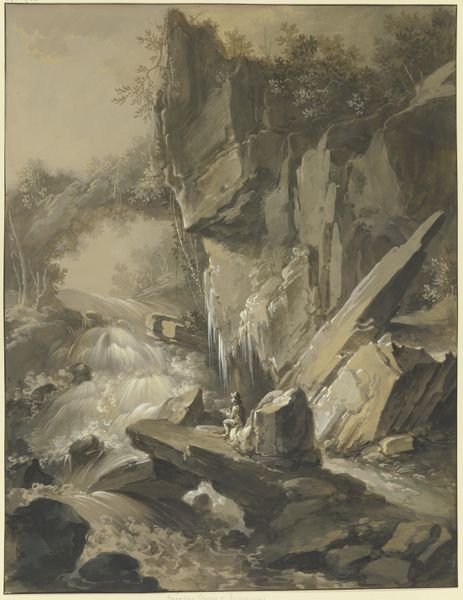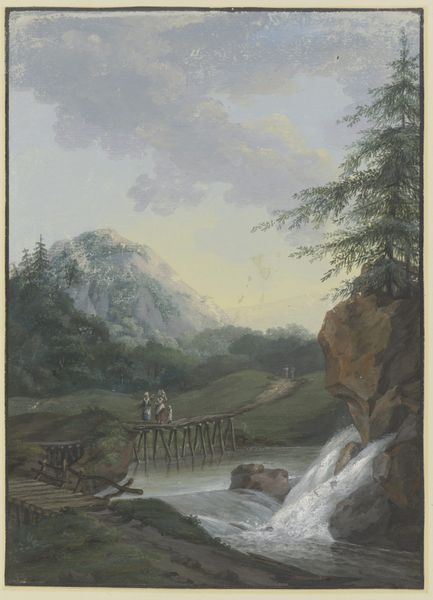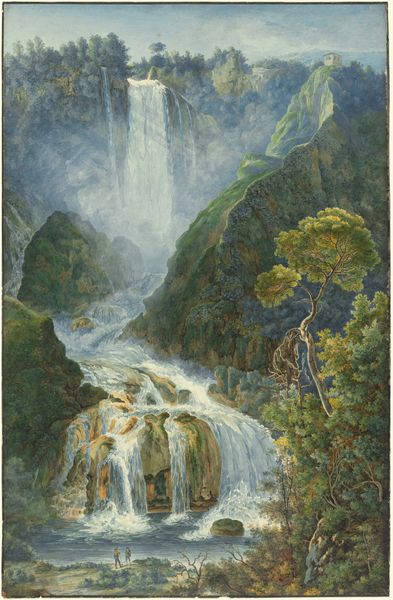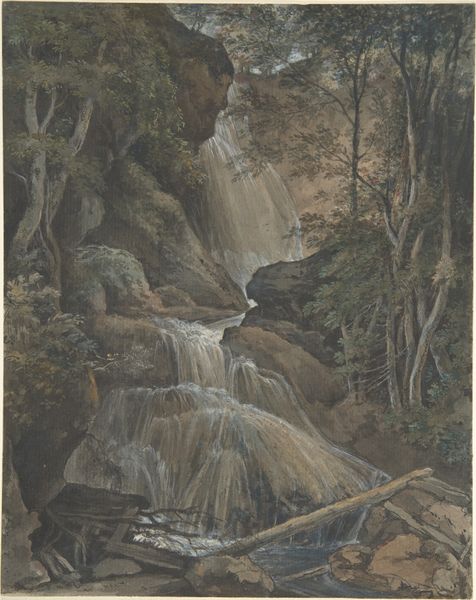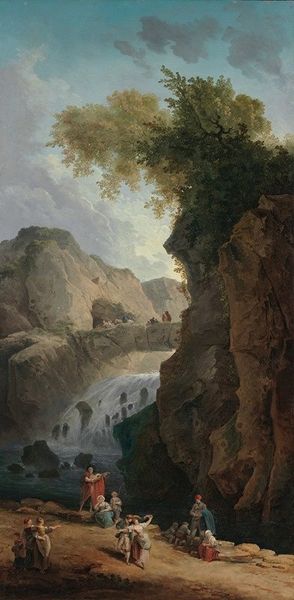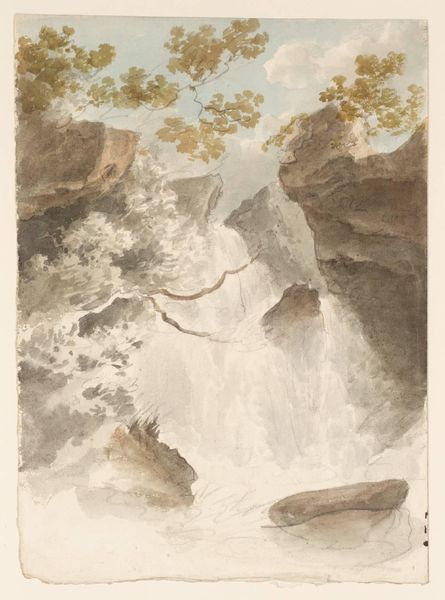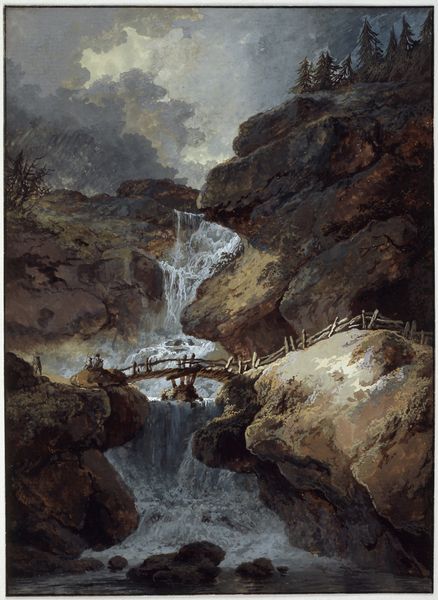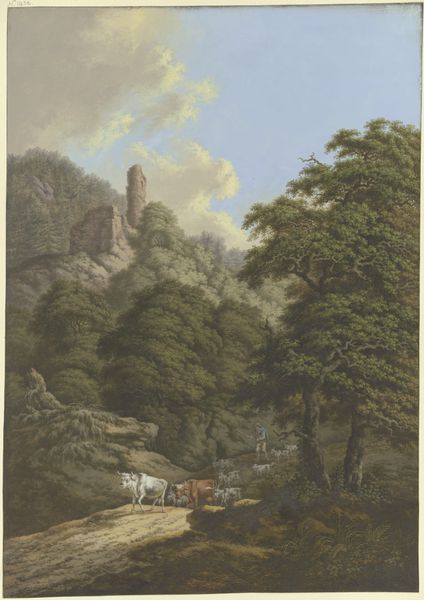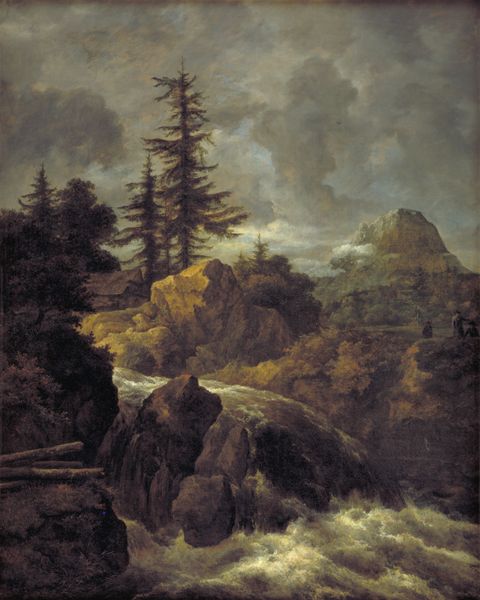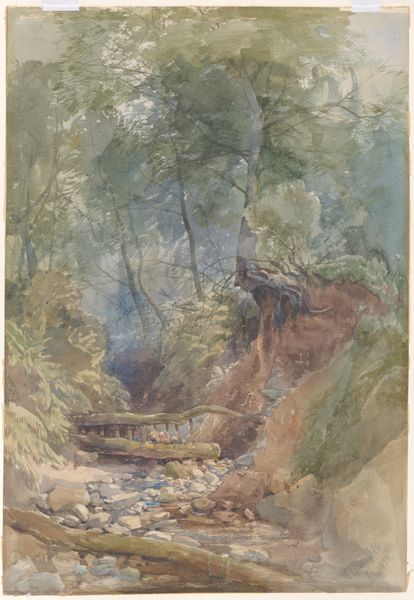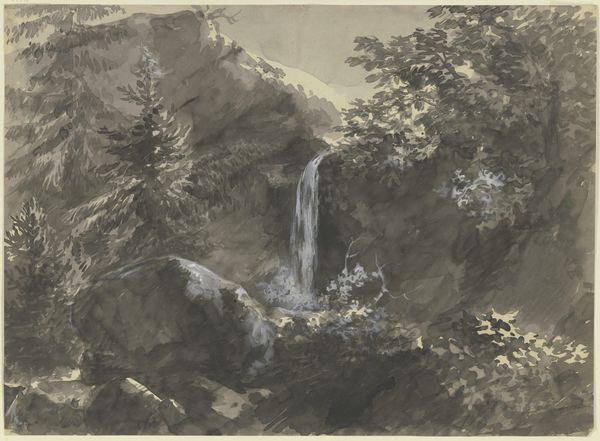
drawing, tempera, watercolor
#
drawing
#
tempera
#
landscape
#
watercolor
#
romanticism
#
15_18th-century
#
watercolour illustration
#
watercolor
Copyright: Public Domain
Curator: Johann Jakob Schillinger created this work titled "Steg über einen Wasserfall, darüber ein Felsentor," which translates to "Bridge over a waterfall, above it a rocky gateway." It resides here at the Städel Museum, realized in watercolor and tempera. The date is unknown. Editor: What a fantastical scene! The mood is incredibly dreamlike, almost otherworldly. The composition really draws my eye to the figure crossing that precarious bridge. Curator: The Romantic period's fascination with the sublime is palpable. Look at how Schillinger depicts the sheer scale of the natural formations. The bridge seems so fragile in contrast, rendered, as it is, with watercolor. I wonder, did he experience similar rock formations locally, and to what degree did that inspire his image making? Editor: Absolutely, that bridge seems almost like an extension of human ambition—a fragile attempt to conquer nature. But consider the symbolic weight of water itself. It could represent purification, or perhaps the constant flow of time. The journey of that lone figure then becomes much more evocative, almost an allegory of life. The rock gate might speak of new beginnings, maybe even rebirth. Curator: Fascinating how those connotations shape our viewing of the piece. It is rendered with watercolour and tempera paints, where we see, on closer inspection, an almost hasty application of washes. It leads one to wonder if this piece represents memory as much as lived experience, particularly because Schillinger used what looks to me like mass-produced drawing paper of the time. The materiality contradicts any unique and bespoke, personalized reading of it. Editor: But aren’t those textures, achieved through specific combinations of material, critical to its romantic aesthetic? Think of the visual symbol of the solitary figure traversing nature, how the scale, and that tiny character in all its symbolism of isolation, speaks to our sense of longing and desire, something uniquely emphasized with scale here, I’d suggest. Curator: Interesting point, how he deploys that small human scale, framed against grand geology to play on that longing. Looking more carefully at the rendering, however, suggests a lack of refined skill perhaps and more a sentimental interest for the emerging commercial market for 'fine art' during that time. Editor: That said, despite questions about artistic intent and the potential industrialisation of imagery through emerging print technologies, Schillinger gives us visual entry into enduring narratives embedded in nature, such as transformation and pilgrimage. Curator: He prompts us, if nothing else, to consider nature's effect on both human endeavor and burgeoning mass culture, well worth considering next time. Editor: Indeed, these kinds of visual encounters push us to understand a culture through material symbol and the power of visual metaphors.
Comments
No comments
Be the first to comment and join the conversation on the ultimate creative platform.
